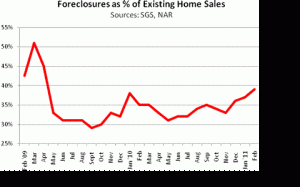It is monetary politics, rather than politics per se that needs to be examined when trying to get a handle on the gold price and, at the heart of that is the state of real interest rates.
Author: Geoff Candy
GRONINGEN -
Despite the noise, and there is plenty of it in markets at the moment, what is driving much of the gold market at the moment, as it has for the last decade is the state of real interest rates.
Speaking on Mineweb.com's Gold Weekly podcast, Bullion Vault's head of Research explains, "Gold is not an industrial metal, gold's use is social not industrial, and its social use is as a store of value, a store of wealth when people need it - it's not exposed to the economic cycle."
Ash points out that while fears about prolonged stagflation, fears of a true depression have helped gold up over the last few years, "on a big boring and technical level it is about negative real interest rates. When the return on cash is below zero after you account for inflation people will buy gold. It's just a fact. It is what happened in the 1970s and its what's been happening progressively over the last decade and particularly in the last three or four years now."
The reason for this he explains is that if people know that money put away on deposit will lose purchasing power they will eventually look for another way of trying to preserve value.
"Gold is a stand up candidate for that, primarily because of its five thousand years of history. Wherever it's been discovered in the world throughout time it has been used as the ultimate store of value. People again are doing that today. They are looking at something which is rare, it's tightly supplied and it's indestructible and that really makes it stand aside from cash, and debt instruments, bond investments where those are paying you less than inflation."
Where are we now?
Given that real interest rates are the major force behind gold prices, the signs would appear rather good for gold. As Ash points out, in the UK for example, citizens are living through the worst negative real interest rates on cash since 1978.
The U.S. and the rest of Europe are not doing much better either but, that is not to say that governments wouldn't want to have higher interest rates, but the weight of debt committments makes that almost impossible.
As Ash explains, "Government debt is so enormous as a proportion of GDP that governments cannot bear 5% interest rates. I do think there's a case for looking at the 2007 banking crisis, the 2007 blow up. US interest rates were creeping up towards 5% and the US economy couldn't bear them at that rate and things fell apart."
He adds, "We can see this in Greece right now. How's Greece moving towards a restructuring? We know it's going to happen whether it happens smoothly, whether it happens dramatically is really neither here nor there, there will be a write-off and creditors will be destroyed. This is what happens after a debt bubble. Always happens after a debt bubble, the creditors will wear it. So people again are looking for something that is indestructible."
The situation in the U.S. is no less extreme, what with the nominal end to QE2 fast approaching and the arguments in Washington about the credit ceiling but, for Ash, much of this is besides the point.
"You do have this interesting confluence coming up over the summer of the nominal end of QE2, plus the debt ceiling arguments going on at the moment in Congress. To be blunt that's noise because we know what central banks are going to continue to do, both in the West and across emerging markets as well. Indian and Chinese real interest rates are very much below zero as well. Similarly for consumer and households there, the savers in those emerging economies buying gold, defending wealth because cash won't".
Source: http://www.mineweb.com/mineweb/view/mineweb/en/page34?oid=129933&sn=Detail&pid=102055



 The loss of confidence will fragment global banking and international financial support, creating a far more volatile global financial situation.
The loss of confidence will fragment global banking and international financial support, creating a far more volatile global financial situation.